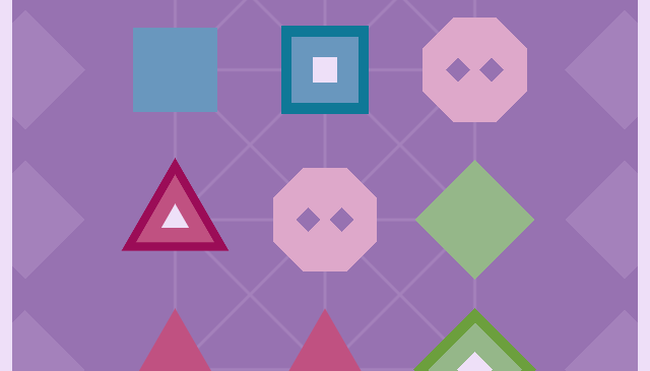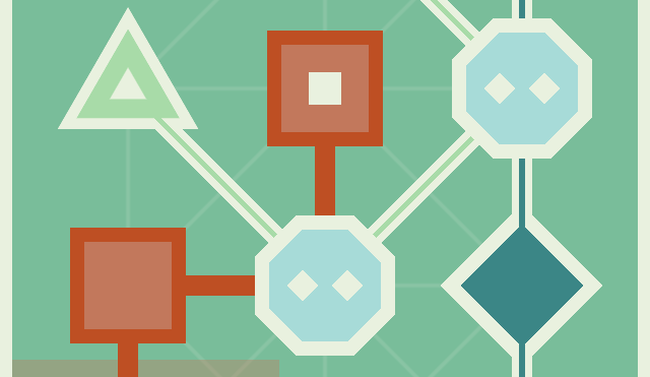- Wondering how to get Monopoly GO! free rolls? Well, you’ve come to the right place. In this guide, we provide you with a bunch of tips and tricks to get some free rolls for the hit new mobile game. We’ll …
Best Roblox Horror Games to Play Right Now – Updated Weekly
By Adele Wilson
Our Best Roblox Horror Games guide features the scariest and most creative experiences to play right now on the platform!The BEST Roblox Games of The Week – Games You Need To Play!
By Sho Roberts
Our feature shares our pick for the Best Roblox Games of the week! With our feature, we guarantee you'll find something new to play!Type Soul Clan Rarity Guide – All Legendary And Common Clans Listed!
By Nathan Ball
Wondering what your odds of rolling a particular Clan are? Wonder no more, with my handy Type Soul Clan Rarity guide.
LYNE Review
The core gameplay of minimalist puzzler LYNE is reminiscent of classic Arukone: connect two like shapes anchored at different spots on a grid via a single, unbroken line. There are multiple shapes on the board that must be connected—triangle to triangle, square to square—without their distinctly-colored lines crossing each other. But LYNE expands upon this basic rule in a number of ways to enhance the challenge, depth, and ingenuity of an initially simple puzzle foundation.
The most obvious of these changes is that LYNE takes place on a graph paper-like grid, allowing lines to be drawn diagonally. In more standard Arukone games, such as Flow Free or Trainyard, each move fills an entire block and can only be dragged horizontally or vertically. LYNE‘s added dimension doubles the potential moves and strategies available, creating seemingly endless options on even small game boards.
To both challenge players further and guide them toward the correct path of the many available, colored spaces that match the end shapes are scattered about the grid. Each of these must be passed through when connecting their related shapes, and can only be touched by their like-colored lines. This means a blue square’s line cannot intersect a green diamond’s, but you also cannot block off access to the diamond since the green line must reach it. The result is often long, roundabout loops where a line circles the screen before returning to an end shape only one block away, and unexpected solutions to seemingly simple challenges.

The line must be drawn here
The core gameplay of minimalist puzzler LYNE is reminiscent of classic Arukone: connect two like shapes anchored at different spots on a grid via a single, unbroken line. There are multiple shapes on the board that must be connected—triangle to triangle, square to square—without their distinctly-colored lines crossing each other. But LYNE expands upon this basic rule in a number of ways to enhance the challenge, depth, and ingenuity of an initially simple puzzle foundation.
The most obvious of these changes is that LYNE takes place on a graph paper-like grid, allowing lines to be drawn diagonally. In more standard Arukone games, such as Flow Free or Trainyard, each move fills an entire block and can only be dragged horizontally or vertically. LYNE‘s added dimension doubles the potential moves and strategies available, creating seemingly endless options on even small game boards.
To both challenge players further and guide them toward the correct path of the many available, colored spaces that match the end shapes are scattered about the grid. Each of these must be passed through when connecting their related shapes, and can only be touched by their like-colored lines. This means a blue square’s line cannot intersect a green diamond’s, but you also cannot block off access to the diamond since the green line must reach it. The result is often long, roundabout loops where a line circles the screen before returning to an end shape only one block away, and unexpected solutions to seemingly simple challenges.
LYNE‘s final—and most engagingly complex—addition is octagonal hubs that allow any line to pass through them, and must be bypassed a specific number of times. While the colored spaces above can only be intersected once, these hubs can and must be crossed equivalent to the dots that mark them. A hub with two dots must be crossed two times, a hub with four must be crossed four times, etc. These hubs are critical to traversing the grid, since they are the only location that two different-colored lines—or even the same line—can cross. However, they also become a frequent sticking point as puzzles grow larger and more and more hubs demand to be filled.
The beauty of LYNE is that while these rules appear complicated on paper, they blend into an elegantly straightforward and naturally intuitive process in-game. This is encouraged by a steady introduction of elements, accompanied by laconic instructions that could double as life advice: “Be connected,” “Be accepting.” The geometric shapes, while abstract at a random glance, are easy to read in the context of the rules. Drawing between them provides an immediate and almost tactile response, as shapes rotate and produce a random musical tone at your touch. A finished path or hub is highlighted in white to indicate its completion, while incomplete or missed items merely pulse with a soft, silent red glow that points out the mistake without punishing.
This soothing approach extends throughout LYNE, which doesn’t threaten players with a time limit or fail state. Lines can be drawn freely and indefinitely, and undoing a previous move is as simple as tapping a shape—the line will retreat back to where you tap, allowing for easy clean-up of a single mistake or an entire path. This encourages diving in and trying even the most intimidating puzzles, although they will have to be unlocked first.
LYNE comes with a generous number of levels preloaded, arranged in 25-level sets. Completing a set unlocks additional levels—we’ve currently unlocked 250 levels and counting—and awards triangles, or “Trytes,” based on set difficulty. These unlock non-level bonuses, like color palettes other than the starter lime/turquoise/burnt sienna. Whether or not the “Trytes” are a tongue-in-cheek commentary on the video game obsession with rewards and prizes, they succeed at providing an added incentive to complete sets and daily challenges.
Without this added push, LYNE‘s levels do begin to blend together, its gameplay fully revealed within the first two sets and the same from there on out. Even with minor variations—such as focusing on two shapes instead of three—this repetitiveness prevents LYNE from being a marathon puzzle game, making it more enjoyable in short bursts. A slightly different game type, like Stickets‘ unlockable “Timed” mode, or new musical queues would help alleviate this monotony. It’s possible one of the higher-tier “Tryte” unlocks may conceal these rewards, but if so, they’re hidden behind many playthroughs of the single, core gameplay.
Of course, this exhaustion is only possible because LYNE is so engrossing. There are times you’ll try the same path a dozen times, not even realizing you’ve repeated your motions unsuccessfully. There are other moments in even “Complex” puzzle sets that your brain will just get it and draw the correct lines on auto-pilot. In a game where even failure is surprisingly soothing, the emotional reward of success is worth chasing.

The good

The bad
More articles...
Monopoly GO! Free Rolls – Links For Free Dice
By Glen Fox
Wondering how to get Monopoly GO! free rolls? Well, you’ve come to the right place. In this guide, we provide you with a bunch of tips and tricks to get some free rolls for the hit new mobile game. We’ll …Best Roblox Horror Games to Play Right Now – Updated Weekly
By Adele Wilson
Our Best Roblox Horror Games guide features the scariest and most creative experiences to play right now on the platform!The BEST Roblox Games of The Week – Games You Need To Play!
By Sho Roberts
Our feature shares our pick for the Best Roblox Games of the week! With our feature, we guarantee you'll find something new to play!Type Soul Clan Rarity Guide – All Legendary And Common Clans Listed!
By Nathan Ball
Wondering what your odds of rolling a particular Clan are? Wonder no more, with my handy Type Soul Clan Rarity guide.








 “
“